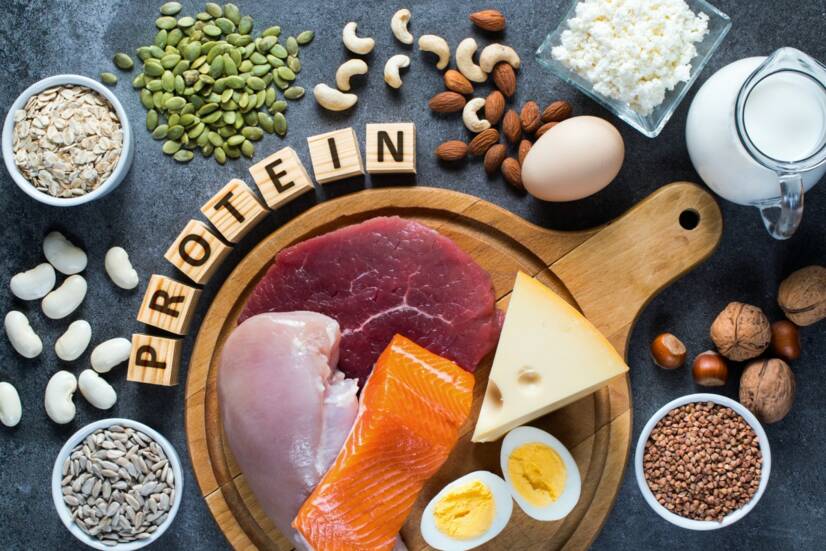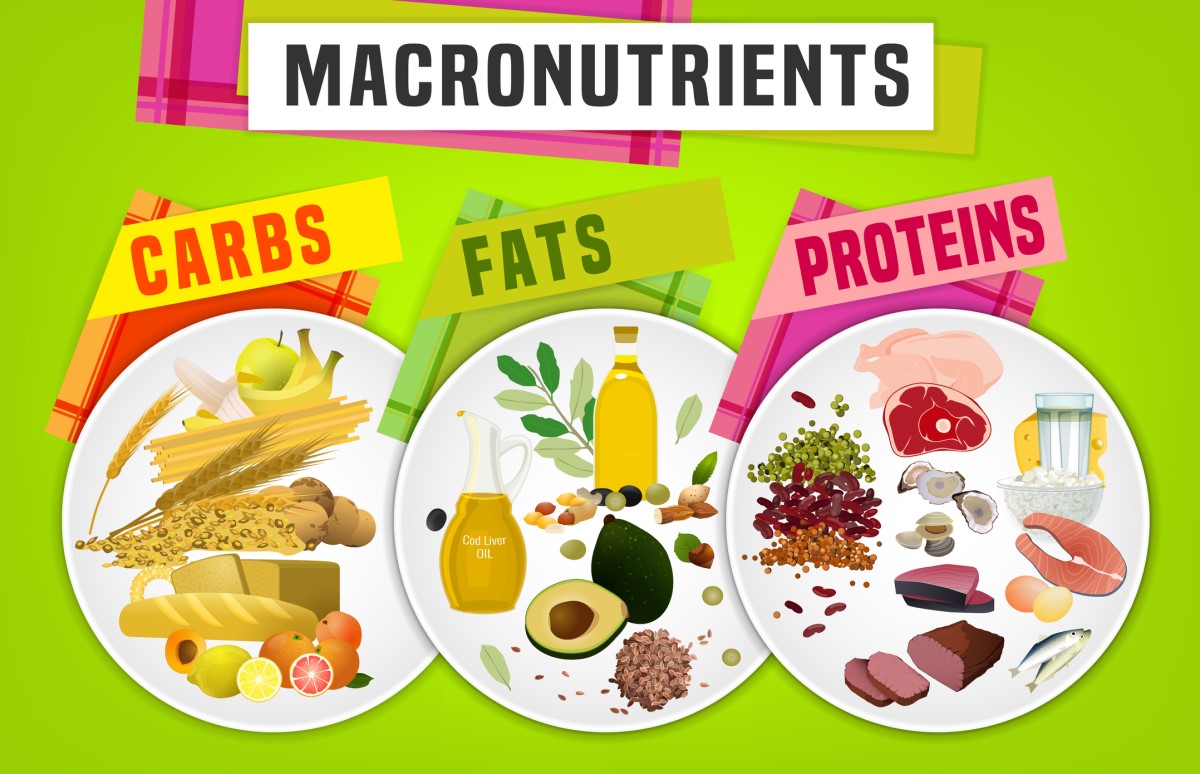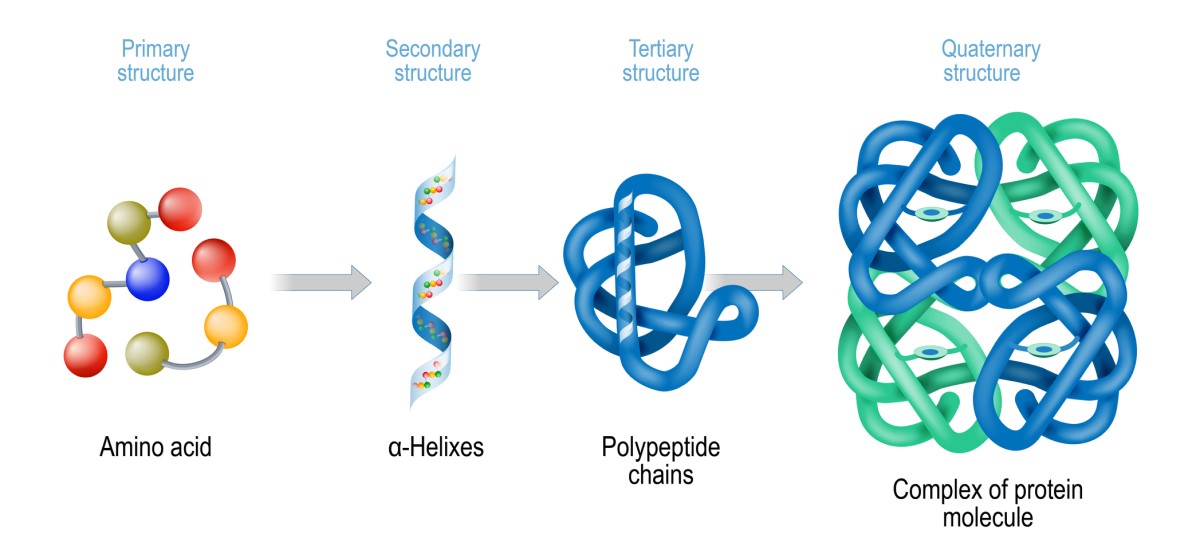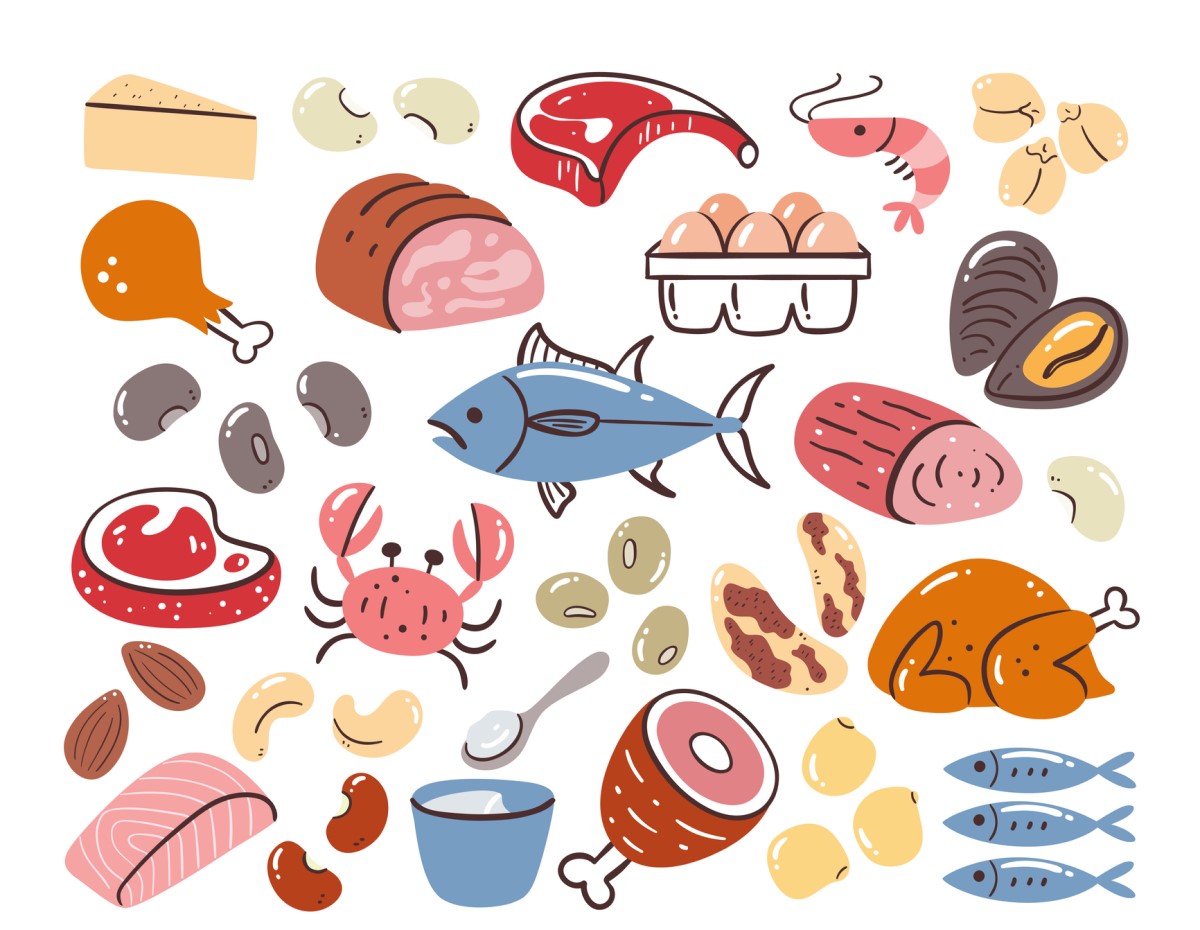- pharmanews.cz - KOLAGEN:WHAT IS THE REAL BENEFIT TO CLOUD HEALTH?
- medicinapropraxi.cz - Aging and skin care
- solen.cz - New ways to improve skin quality
- webmd.com - Good Protein Sources
- webmd.com - High-Protein Diets: Do They Work?
- sciencedirect.com - Protein
How protein benefits skin health + What does protein contain?

We couldn't live without protein. Let's take a closer look at its role in our bodies.
Article content
- What are nutrients?
- A little history about proteins...
- What roles do proteins play in our bodies?
- What do proteins consist of?
- Keratin as part of the various skin structures
- What role do proteins play in aging?
- What types of collagen do we know?
- What role does protein play in nail disease?
- Keratin and beautiful hair
- What is the recommended dose of protein?
- What are the sources of protein
- You can find different types of protein in pharmacies:
- A few recipes to finish...
Protein is a nutrient, specifically a macronutrient. It is very important for the proper functioning of the human body. For example, children need protein for their growth. For athletes, protein is important for building muscle mass. In addition to the above, protein is an important source of energy.
What are nutrients?
By the term "nutrients" we can imagine all the components of food that ensure the proper functioning of various processes in the human body. They are very necessary for maintaining good health.
We divide nutrients into 2 groups of nutrients:
1. Macronutrients
This group of substances includes proteins, fats (lipids) and sugars (carbohydrates). As we know, they are considered the main components of our diet.
They have 2 basic roles in the human body:
- Building role - The basic building material that the human body is made of (proteins and fats).
- Energy source - The fuel that is needed for the human body to function properly (sugars and fats)

2. Micronutrients
Micronutrients are necessary for proper functioning of metabolism.
Our body does not need large amounts of micronutrients for proper metabolism. Yet they are considered key components of our diet. Without these substances, various processes in our body (growth, energy production) could not take place.
Micronutrients include:
- Vitamins - vitamins A, B, C, D, E and K and others.
- Minerals - calcium, phosphorus and others
- Trace elements - iron, zinc, selenium, manganese
See also the article:
Essential nutrients in the human diet: what are proteins, sugars, fats?
A little history about proteins...
The name proteins comes from the Greek word proteios = in leadership, number one or primordial.
The name protein was introduced by the Swedish chemist Jöns Jacob Berzelius. In addition to naming it, he was instrumental in emphasizing how important proteins are to life processes.
Previously, the term protein was used, which was derived from the German word Eiweisskörper = egg white protein. This name was coined after the French chemist Antoine-François Fourcroy distinguished 3 types of animal proteins: albumin, fibrin and gelatin.
These types of proteins were collectively called albumins, after the prototype derived from egg white.
What roles do proteins play in our bodies?
Proteins have different functions in the body:
- structural - collagen, keratin, fibroin
- catalytic - enzymes (catalyse biochemical processes)
- transport - haemoglobin and myoglobin (carry oxygen)
- protective - immunoglobulins
- storage - ovalbumin
- motor - actin and myosin (involved in muscle contraction)
- regulatory - insulin
Did you know that...
Proteins can act as toxins? These include some snake venoms.
What do proteins consist of?
Proteins are macromolecules.
They consist of at least one polypeptide chain. 100 or more amino acids are involved in the formation of a polypeptide chain. Simply put, the building blocks of proteins are amino acids.
Interesting information in the article:
What are amino acids and why do we need to replenish them in the body?
We know of several hundred different amino acids. However, only 22 are regularly found in protein.
Amino acids are divided into:
- Essential - The human body cannot make these amino acids. For this reason, we must take them from our diet. Their sources are mainly foods of animal origin (milk, meat, eggs). Proteins of plant origin often do not contain enough essential amino acids.
- Non-essential - The human body can make them.
The properties of proteins depend on their spatial arrangement.
There are 4 levels of protein structure:
1. Primary protein structure
It is determined by the order of amino acids in the polypeptide chain.
It is very important for the formation of all types of higher structures.
However, it does not express the spatial arrangement of the peptide chain.
2. Secondary structure of proteins
Determines the spatial arrangement of the polypeptide skeleton.
3. Tertiary structure of proteins
It can be thought of as the overall 3D structure of the polypeptide.
The tertiary structure determines the final spatial shape of the protein. The shape can be fibrillar (filamentous) or globular (club shape).
a) Fibrillar proteins
Fibrillar proteins consist of polypeptide chains arranged in one direction. Most of them are insoluble in water.
Their function in the human body is primarily structural.
Fibrillar proteins include e.g:
- Keratin - the basic component of skin derivatives (hair, nails, hair, etc.)
- Collagen - found mainly in fibrous tissues (tendons, ligaments and skin)
- Elastin - an important component of blood vessels, ligaments and tendons. Elastin, a component of skin, gives skin elasticity
b) Globular proteins
Globular proteins have a complex structure compared to fibrillar proteins and are water soluble.
Globular proteins include:
- Myoglobin - carries oxygen in tissues
- haemoglobin - oxygen transport
- albumin - transport of various substances
- globulins - part of the immune system
4. Quaternary structure of proteins
Expresses the spatial relationship between different tertiary structures.

Keratin as part of the various skin structures
Skin and proteins in close relationship...
Keratin is considered the basic building protein of the skin. Keratins always occur in pairs. Together they form a structure that protects against mechanical influences. They are also involved in the formation of metabolic processes and signaling pathways.
Diseases caused by mutations in keratins are listed in the following table
| Localization of keratin | Diseases |
| Suprabasal layer of the skin |
|
| Basal layer of the skin |
|
| Suprabasal layer of the skin |
|
| The thickest layer of the skin (stratum spinosum) |
|
| Unpeeled parts of the skin, oral mucosa |
|
| Palms and soles of the feet |
|
What role do proteins play in aging?
The skin of a young person has a high content of collagen (especially type I collagen), which is regularly arranged.
During the ageing process, the content and quality of collagen fibres decreases (1% per year). The arrangement of collagen fibres gradually changes. Ordered fibres become disordered. Type III collagen predominates.
Over time, proteolytic enzymes are activated. These degrade not only type I collagen but also other proteins. UV radiation triggers many reactions in our body that lead to increased deposition of elastin, which can replace degraded collagen.
What types of collagen do we know?
There are 25 known types of collagen. The five most common types of collagen and their properties are listed in the table below
| Protein type | Location |
| Type I |
|
| Type II |
|
| Type III |
|
| Type IV |
|
| Type V |
|
Did you know...
After the age of 30, we lose approximately 1% of our collagen each year.
What role does protein play in nail disease?
The nail is defined as a specific keratin organ of the skin (dermal adnexa).
Nail diseases account for approximately 10% of all skin diseases.
In many cases, nail changes are the result of low nutrient levels in the body. These are mainly vitamin A, vitamin E, zinc and selenium.
Nail changes can be a signal of skin or systemic diseases. These include psoriasis, alopecia nodosa, Darier's disease and other dermatitis.
Keratin of the hair type makes up approximately 80 to 90 % of the nail plate. Keratin of the epithelial type makes up approximately 10 to 20 % of the nail plate. Many women over 50 years of age are more prone to weakening of the intracellular keratinocyte bridges. Approximately 30 % of women of this age have brittle nails.
Keratin and beautiful hair
Keratin is found in the hair, skin and nails. It provides hair with protection from the damaging effects of the external environment.
Other effects include:
- Nourishes and regenerates hair
- Provides deep treatment for damaged and brittle hair
- Prevents frizz
- Smoothes hair
- Moisturizes hair
- Adds volume to hair
- Promotes growth
What is the recommended dose of protein?
The recommended dose of protein is based on a person's weight.
The calculation is very simple: for every 1 kilogram of weight, we should take in approximately 1 gram of protein.
So if you weigh 75 kilograms, you should eat food that provides 75 grams of protein in 1 day.

What are the sources of protein
You often ask: What contains protein?
However, some proteins must be supplemented with food. Protein can be obtained from both animal and plant foods.
Animal protein can be obtained from food or from plants.
They have a higher content of essential fatty acids. For this reason, they are also referred to as complete proteins. The disadvantage of eating them is that they contain large amounts of fat and cholesterol.
But beware: the fattier the meat or cheese, the less protein it contains.
Sources of animal protein include:
- lean meat (chicken and rabbit)
- fish
- venison
- good quality ham
- eggs (especially egg whites)
- low-fat cheese
- low-fat cottage cheese
Vegetable proteins
The second group is plant proteins.
They are low in fat and higher in fibre. The disadvantage is that they do not contain all the essential amino acids.
Foods high in vegetable protein include:
- legumes
- almonds
- poppy seeds
- sesame seeds
- soya products - soya meat, tempeh, tofu
- vegetable meat substitutes
Have you heard of meat substitutes? These are specially prepared mixtures, often made from wheat protein, beetroot, water and spices.
Meat substitutes are used in steaks, stir-fries, stews, gravy, etc. They can be fried, stewed, baked, boiled or added to salads.
It is a very good substitute for meat eaters because it resembles and tastes like meat. It is also suitable for those who have little time to prepare meals. Its advantage is its quick preparation.
Examples of foods containing protein are given in the following table
| Food | Effects |
| Seafood |
|
| Lean meat |
|
| Milk, dairy products |
|
| Eggs |
|
| Beans |
|
| Soya beans |
|

You can find different types of protein in pharmacies:
- Proteins for weight loss - They are also called fat burners. However, taking protein alone is not enough. A combination of exercise and taking protein is necessary to achieve the desired effect.
- Hemp protein - Unlike other proteins, hemp protein contains a total of 22 amino acids. That is why it is also called a complete protein.
- Casein proteins - They are designed to improve athletic performance, for diabetes or liver disease.
- Rice proteins - These are plant proteins. They are suitable for vegetarians, vegans, celiacs and allergy sufferers. They are easily digestible.
- Soy protein - They are good for increasing energy, building muscle mass or for weight loss. They contain soy protein isolate, which is more pure than protein.
A few recipes to finish...
Breakfast Tip
SCRAMBLED EGGS
Ingredients:
- 4 eggs
- 1 tablespoon pure ghee
- spring onions
- vegetables - tomatoes, lettuce, peppers, spring onions
- fresh herbs
- salt
Procedure:
Beat the eggs and pour into a cold pan. After a few minutes, add the ghee. Stir until the eggs are done.
Serve the scrambled eggs with your favourite vegetables.
Lunch tip
BAKED SWEET POTATOES STUFFED WITH BEEF
Ingredients:
- 300 g beef (rump)
- 2 medium-sized sweet potatoes
- 150 g of tomatoes
- 40 g tomato puree
- 200 ml beef stock
- 1 onion
- 1 handful of bear garlic
- ½ teaspoon ground sweet paprika
- ½ teaspoon ground cumin
- salt and ground black pepper to taste
- olive oil
Procedure:
Prick the sweet potatoes with a fork and then bake at 180 °C for about 45 minutes.
Heat the oil in a frying pan and fry the finely chopped onion until golden brown. Then add the tomato paste, minced beef, cumin and sweet pepper to the onion.
Fry the mixture until the meat is well browned.
Pour the beef stock over the meat. Add the chopped tomatoes. Cover and cook for approximately 15 minutes.
Finally, add finely chopped bear garlic, salt and pepper.
Cut the baked sweet potatoes lengthwise, fluff the inside lightly with a fork and season with salt. Then fill them with the meat mixture.
Tip for soup
Ingredients:
- 150 g red lentils
- 200 g carrots
- 800 ml vegetable broth
- 100 ml cooking cream
- 1 large onion
- 3 cloves of garlic
- about 5 cm long piece of fresh ginger
- 1 and ½ tablespoons olive oil
- 1 and ½ teaspoons turmeric
- ½ teaspoon curry spice
- juice of ½ lemon
- salt, ground black pepper and dried chilli powder to taste
Procedure:
Chop the onion finely.
Heat oil in a pan and fry the onions until golden brown. Add finely chopped/pressed garlic and chopped ginger to the onions. Fry this mixture for a few more minutes. Add thinly sliced carrots, rinsed lentils and pour the vegetable stock over the mixture.
Cook the soup on low heat for about 20 minutes.
Finally, blend the soup.
Interesting resources










